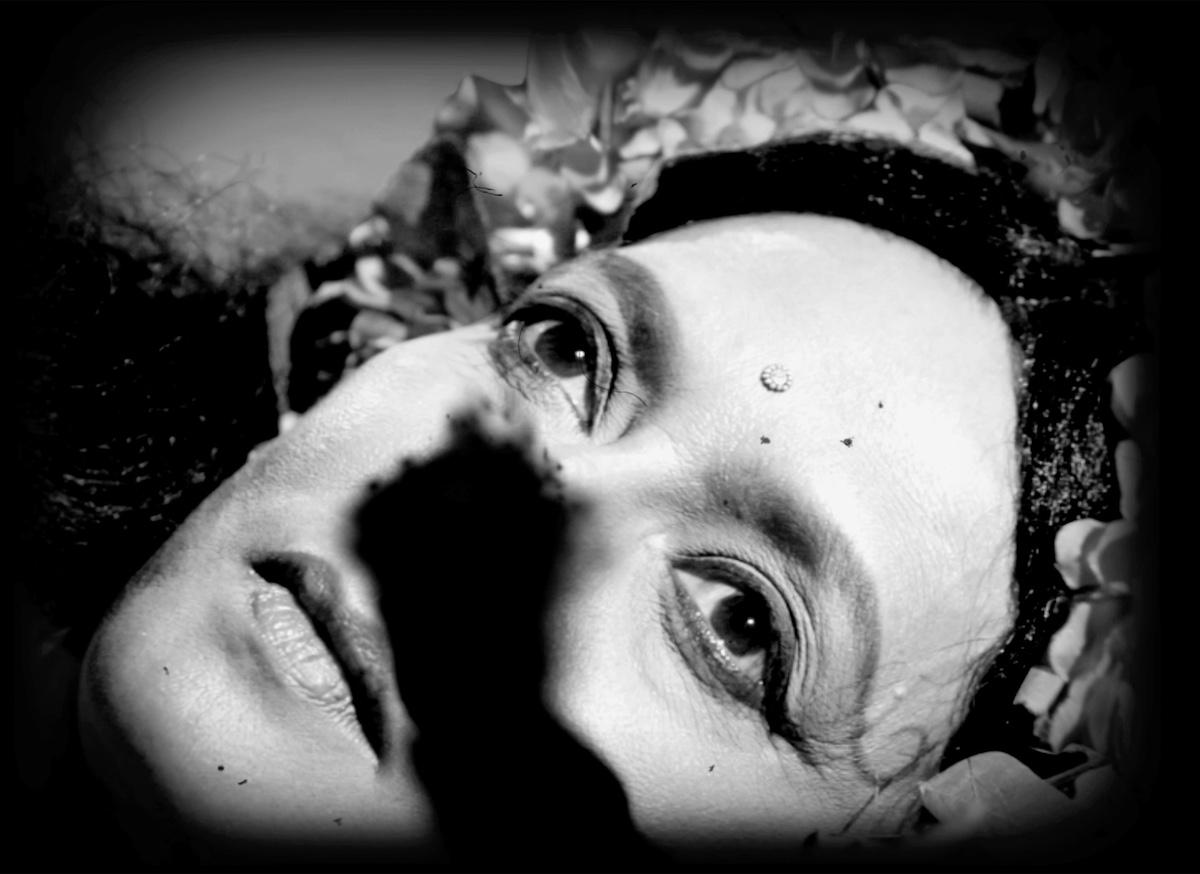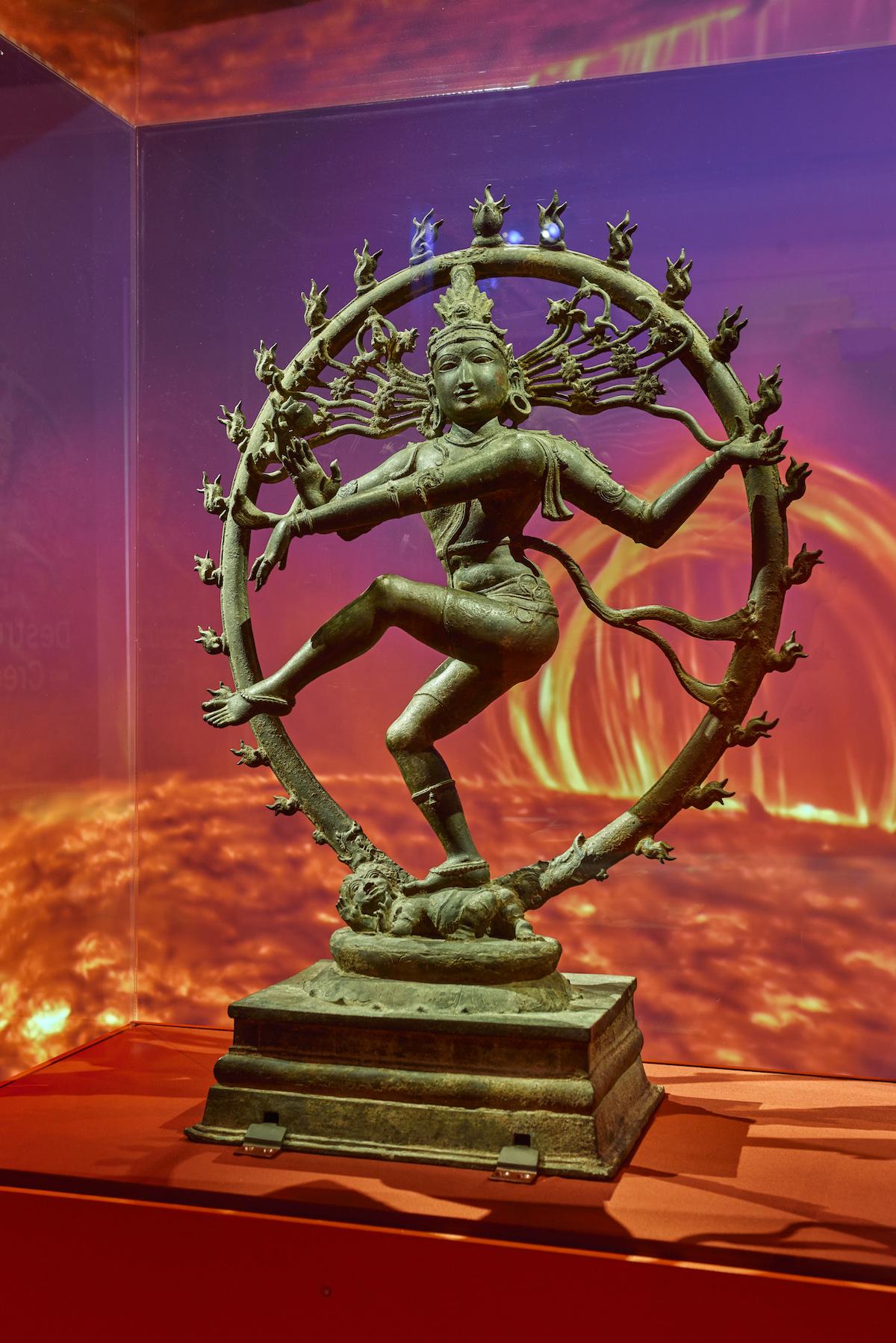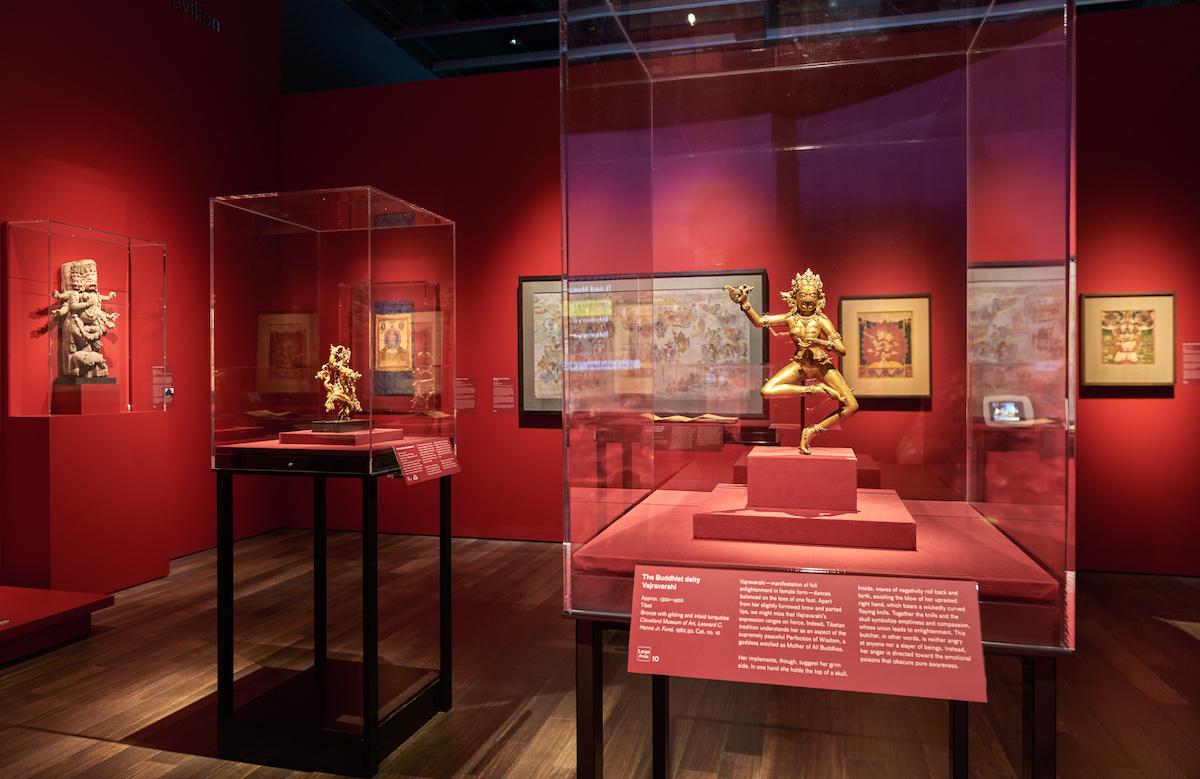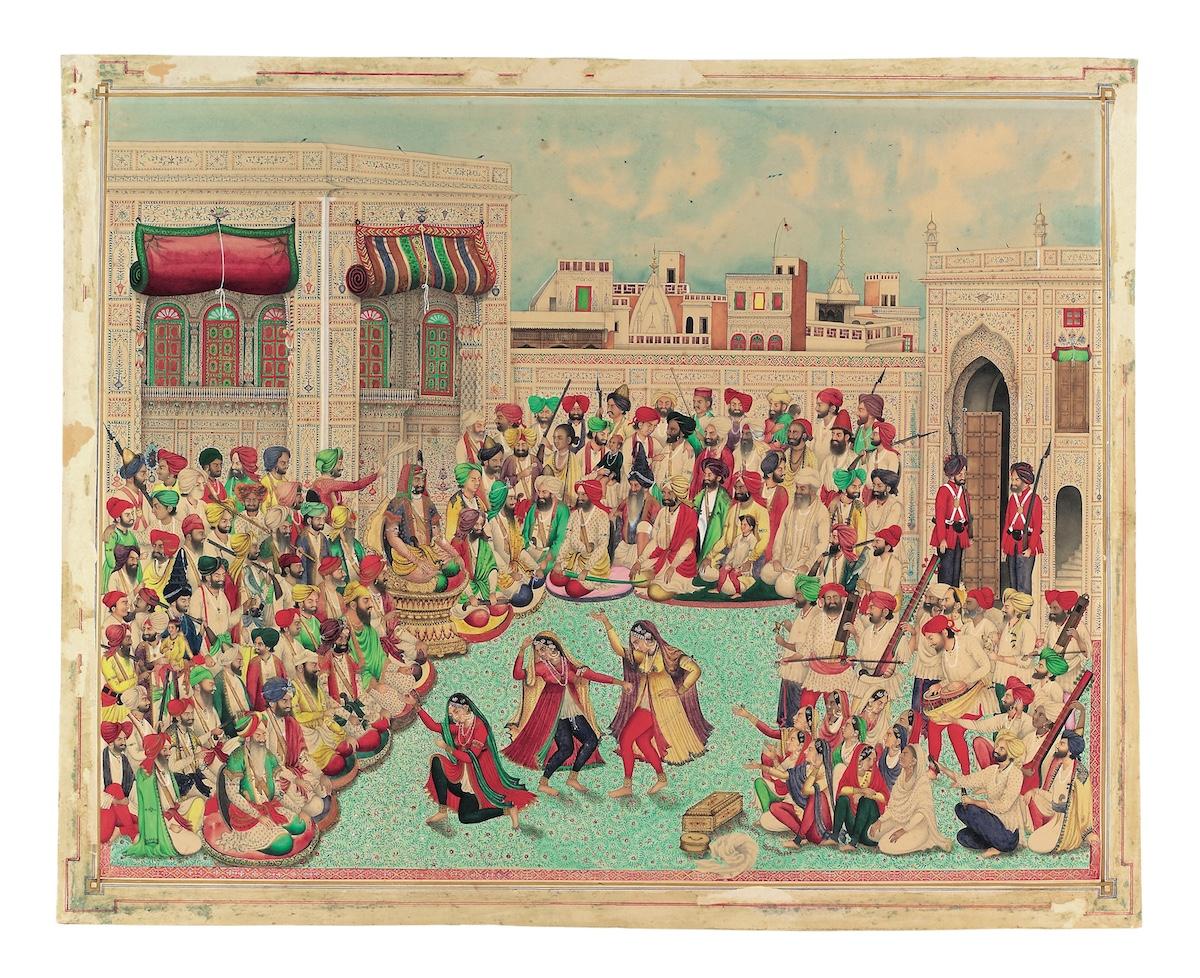Dance is an art form that consists of rhythmic body movements, usually accompanied by music, in a defined space. Whether done impulsively or choreographically, the purpose is to express emotions, narrate a story, or show devotion. In South and Southeast Asia, dance stems from the Indian tradition. The basic principles, aesthetics, and gestures can be traced back to the Natya-shastra, a 2,000-year-old Sanskrit treatise on performing arts. The text consists of thirty-six chapters explaining the history of dramaturgy, the role of deities in the arts, and the theory of Tandava, the divine dance made by the Hindu god Shiva.
The exhibition is organized around five themes that answer the question “What is dance accomplishing here?” The first section, Destruction and Creation (Awe), looks at the power of dance as the bringer of cosmic transformation. Upon entry to the exhibit, one is met by a statue of a dancing Shiva from almost 900 years ago surrounded by a projected video of NASA footage of solar eruptions. Frequently represented dancing inside a flaming halo, Shiva’s rhythmic movements can create, preserve, or destroy the universe. His upper right hand holds the damaru, the drum that made the first sound of creation, while his upper left holds agni, the fire that destroys the universe.
































